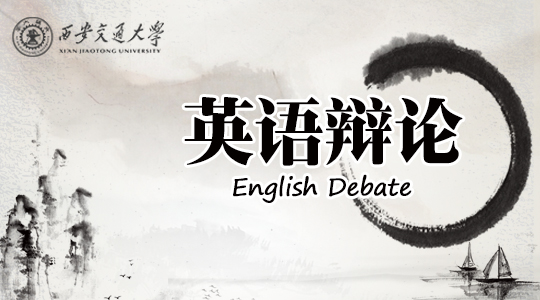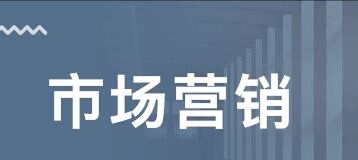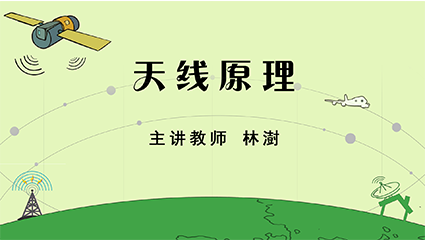
当前课程知识点:Fundamentals of Nursing > Chapter 1 > 1-2 The historical development of Modern Nursing and Contemporary Nursing Practice in China > The historical development of Modern Nursing and Contemporary Nursing Practice in China
返回《Fundamentals of Nursing》慕课在线视频课程列表
返回《Fundamentals of Nursing》慕课在线视频列表
Hi, everyone, welcome back.
I am Jing Su.
In the previous session
we briefly discussed the historical
development of modern nursing
in western countries
and the definition of nursing.
In this session
I will further talk about the historical
and current development
of nursing in China.
By the end of this session
you will be able to
describe the historical events
influencing nursing
development in China
and verbalize understanding
of the contemporary nursing
development in China.
In the long history of China,
Traditional Chinese Medicine,
in the abbreviation of TCM
influenced peoples’ health deeply.
TCM has been practiced
for over 2,500 years
in various forms including
herbal remedies,
acupuncture, massage, exercise,
and diet.
It takes a holistic approach to view
and treat the mind-body-spirit
from a wellness perspective.
The focus is on cultivating
the healthy internal harmony.
Although medical treatment,
environment, patient' s spirits,
and care are equally important
for recovering in TCM.
there was no professional nursing
in ancient China.
Modern nursing started in China
due to the influence of Western
missionaries arriving
after Opium War in 1842.
But before 1835,
the first Western influenced
hospital was established in Guangzhou.
The first American nurse,
Elizabeth McKechnie,
came to China in 1884
and began to introduce the Florence
Nightingale nursing system.
In China,
In 1888,
the first school for Chinese nurses
was opened
in Fuchou by another American,
Ella Johnson.
She was later joined by Nina Gage,
who arrived in 1908
and then established a nurse
training program in 1910
as part of the Yale mission.
Nina Gage later served as president
of the Chinese Nursing Association
between 1912 and 1914.
In 1920 Asia' s first 5-year bachelor
nursing degree was established
at Peking Union Medical College.
Between 1924 and 1952,
about 300 nurses
with bachelor-degree graduated
from PUMC.
Among them,
many became
prominent nursing leaders and talents.
Wang Xiuying,
who graduated in 1931,
is known as the first recipient
of Florence Nightingale Medal
from China.
She was a nurse, educator
and pioneer in nursing education
and public health in China
and contributed to the nursing
and public health development
after the establishment
of People' s Republic of China.
She described nursing as:
The patient will be hopeless
without medicine;
The patient will be helpless
without nursing.
During 1952-1979 The only nursing
education programs were
diploma program which was also
called certification programs.
Most of the programs
were 3-year training curriculum
and recruited juni or high school
or high school graduates.
Until 2000,
diploma program trained nurses
made up the majority of workforce
at different levels of hospitals
in the country.
One of the hallmarks for current
nursing development in China is,
that After 1979,
post-secondary nursing programs
was reestablished gradually in China.
In 1983, Tianjin Medical College,
now Tianjin Medical University,
launched the first 5-year
baccalaureate nursing program.
After that,
baccalaureate nursing programs
have sprung up across the country.
The first master' s nursing program
was set up in 1992,
at Beijing Medical University.
A bachelor' s degree
was a requirement for admission
to the master' s programs in China.
The first doctoral nursing program
was created in 2004 by Central
South University and Second Military
Medical University.
A master' s degree
was required for a student to
enter the doctoral nursing programs.
The objectives of doctoral nursing
education focused on three main areas
(1) professional values,
professional development abilities,
and professional culture
of the human spirit;
(2) the international Perspectives
and international activities;
and (3) nursing research abilities.
Currently in China the number
of nurses has been increasing fast:
From the table we can see
there were only
405,200 nurses in 1980.
But, by 2018,
there were 4.03 million nurses
in the whole country.
In 2006,
WHO estimates that at least 2.5 medical
staffs (physicians, nurses, and midwives)
per 1,000 people would be needed
to provide adequate coverage
with primary care interventions.
In 2012 in China,
there were only 1.66 nurses
per 1000 people.
this number increased
to be 3.14 in 2020.
The increase number of nurses reflected
a big demand for nursing services in China
and it also brings great chances
of development for Chinese nurses.
On the other hand,
the educational structure
of Chinese nurses
has been changing dramatically.
In 2018 there were 25.5% nurses
of certification program,
50.4% who were graduates
of associate degree,
23.5% of baccalaureate graduates,
and 0.2% of master' s graduates.
Compared with 51.3% in 2010,
in 2020 there are 70% nurses
with associate degree and above.
From the data we can see that nowadays,
most of registered nurses working
in the hospitals
and other clinical settings
have college level education or above
in China.
Started from the 1990s,
specialist nursing has developed very fast
in China.
Every year the Chinese nursing
association holds specialist training
programs in different nursing fields,
such as complex intravenous therapy,
wound care, diabetes care,
anesthesia nursing etc.
These nursing specialists
have played an effective role
in hospitals,
communities and patients' family
by facilitating the standard
of specialty nursing,
dealing with complex problems,
teaching students in the academia
and patients in the hospital,
as well as conducting research activities.
Currently, In China,
the nursing role has become more
and more important in health promotion,
disease prevention, health restoration
and the care for the aging population.
The scope of nursing is expanding.
Nursing in China needs to develop
rapidly and scientifically.
The key points of development are
1. Educational reform
should be conducted
based on national health priorities
and people' s health needs.
Nursing education should prepare
nurses to work effectively
in multidisciplinary teams
with maximize graduate competencies
in health technology.
2 The role of nurses
in both primary care
and specialty care should be enhanced
and standardized with national
and local health policy.
3. Nursing theories grounded
in Chinese society should be studied
and developed to guide clinical practice.
Evidence based clinical practice
and management
need to be improved nationally.
In this unit we briefly introduced
the history of
the modern nursing development
in western country and China.
Nursing as a profession
has its own theoretical foundation.
We should use practice models
and the nursing process
to identify health problems
and implement care delivery to patients.
In the next unit
I will further explain
what nursing process is,
and how it can be applied
to patient care.
Thank you for your attention.
See you next time.
-1-1 The historical development of Modern Nursing and Contemporary Nursing Practice I
--The historical development of Modern Nursing and Contemporary Nursing Practice I
-1-2 The historical development of Modern Nursing and Contemporary Nursing Practice in China
--The historical development of Modern Nursing and Contemporary Nursing Practice in China
-Chapter1
-2-1 Clinical Thinking
--Nursing Process:Critical Thinking
-2-2 Overview of Nursing process
-2-3 Assessing
-2-4 Diagnosing
-2-5 Planning
--Planning
-2-6 Implementating
--Nursing Process: Implementating
-2-7 Evaluating
-2-8 Documentating and Reporting
--Nursing Process: Documentation
-Chapter2
-3-1 Introduction of Asepsis
-3-2 Chain of Infection
-3-3 Performing Hand Hygiene
-3-4 Applying and Removing Personal Protective Equipment
--Applying and Removing Personal Protective Equipment
-Chapter3
-4-1 Vital signs I
-4-2 Vital signs II
-Chapter4
-5-1 Patient Safety
-5-2 Fall Prevention
-Chapter5
-6-1 Skin Integrity
-6-2 Pressure Ulcers
-Chapter6
-7-1 Pain Management I
-7-2 Pain Management II
-Chapter7
-8-1 Administering oxygen by cannula and face mask
--Administering oxygen by cannula and face mask
-8-2 Suctioning an endotracheal or tracheal tube
--Suctioning an endotracheal or tracheal tube
-Chaper8
-9-1 Nasogastric tube insertion and feeding I
--Nasogastric tube insertion and feeding I
-9-2 Nasogastric tube insertion and feeding II
--Nasogastric tube insertion and feeding II
-Chaper9
-10-1 Urinary Elimination
-10-2 Performing Urinary Catheterization I
--Performing Urinary Catheterization I
-10-3 Performing Urinary Catheterization II
--Performing Urinary Catheterization II
-Chapter10
-11-1 CPR
--CPR
-Chapter11
-12-1 Overview of medication I
-12-2 Overview of medication II
-12-3 Oral Medication
-12-4 Intradermal Injection
-12-5 Subcutaneous Injection
-12-6 Intramuscular Injection
-12-7 Intravenous Infusions
-Chapter12
-Final Exam




